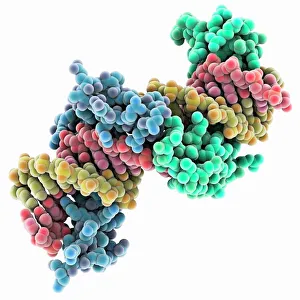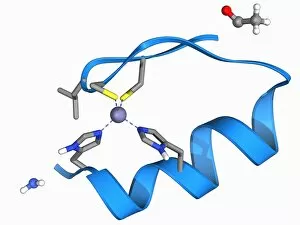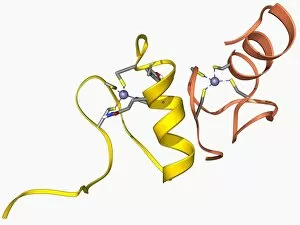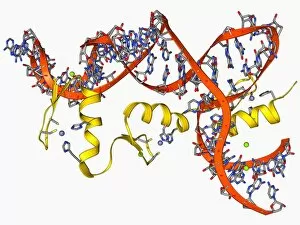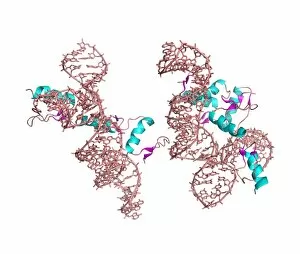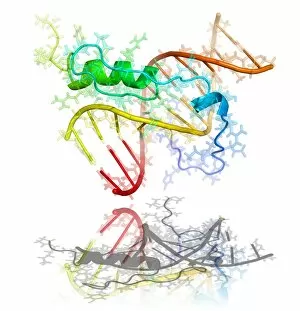Zinc Finger Collection
"Unlocking the Secrets of Zinc Fingers: Exploring their Role in DNA Binding and Transcription" Zinc fingers
All Professionally Made to Order for Quick Shipping
"Unlocking the Secrets of Zinc Fingers: Exploring their Role in DNA Binding and Transcription" Zinc fingers, small protein domains with a unique structure resembling a finger, have captivated scientists for decades. These remarkable molecules are known to bind tightly to specific DNA sequences, playing a crucial role in gene regulation. One fascinating aspect of zinc fingers is their ability to interact with transcription factors and ribosomal RNA. These interactions enable them to modulate gene expression by either activating or repressing the transcription process. Among the diverse zinc finger variants discovered, one particular molecule stands out - F006/9557. This zinc finger exhibits a strong affinity for binding to DNA strands, highlighting its importance in regulating genetic information flow. The GATA transcription factor also relies on zinc finger F006/9547 for its function. By forming complexes with this specific zinc finger variant, GATA can effectively control gene expression patterns essential for various biological processes. Furthermore, other intriguing associations between transcription factors and ribosomal RNA have been identified using zinc fingers such as F006/9530 and F006/9516. These findings shed light on the intricate mechanisms underlying protein synthesis within cells. Notably, it is not only DNA that captures the attention of these versatile proteins; they also bind directly to DNA strands like C014/0864. This interaction further emphasizes their significance in orchestrating genetic activities at multiple levels. As we delve deeper into understanding these molecular marvels, new insights continue to emerge regarding their involvement in vital cellular functions. The interplay between transcription factors and ribosomal RNA mediated by zinc fingers holds immense potential for unraveling complex biological processes that shape life itself. Exploring the world of zinc fingers provides us with an exciting glimpse into how nature has ingeniously designed these tiny yet powerful entities. Their ability to bind selectively to DNA strands opens up avenues for manipulating gene expression and potentially developing novel therapeutic strategies against various diseases.

